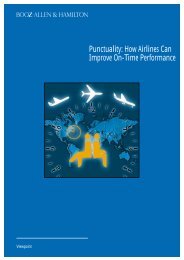The sentence
The sentence
The sentence
You also want an ePaper? Increase the reach of your titles
YUMPU automatically turns print PDFs into web optimized ePapers that Google loves.
3. We can use singular or plural verbs with nouns like the majority, the public and the youth<br />
of today: <strong>The</strong> public want (or wants) to know how they are (or it is) governed.<br />
<strong>The</strong>re words do not have regular plural forms: (Not *the publics*)<br />
4. We use only plural verbs with nouns like cattle, the military, people, the police and<br />
vermin:<br />
<strong>The</strong>re are too many people in the world.<br />
(Not *<strong>The</strong>re is too many people* *<strong>The</strong>re are too many peoples*)<br />
there words do not have normal plural forms, but note that peoples means ‘national<br />
populations’: <strong>The</strong> peoples of the Arab World have a common language.<br />
Nouns with a plural form + singulat or plural verbs: ‘acoustics’<br />
1. Nouns ending in –ics:<br />
- athletics, gymnastics, linguistics, mathematics (maths) and physics take a singular verb:<br />
Mathematics is not the most poplar school subject. (Not *Mathematics are*)<br />
- acoustics, economics, phonetics and statistics take a singular verb only when they refer<br />
to the academic subject: Statistics is a branch of economics. (Not *statistics are*)<br />
<strong>The</strong>y take a plural verb when the reference is specific: Your statistics are unreliable.<br />
2. Nouns like crossroads, headquarters, kennels, series, species and works are singular when<br />
they refer to one: This species of moth is rare.<br />
<strong>The</strong>y are plural when they refer to more than one: <strong>The</strong>re are thousands of species.<br />
Nouns with a plural form + plural verbs: ‘trousers’<br />
1. <strong>The</strong>re nouns have a plural form only and are followed by a plural verb:<br />
glasses (= spectacles), jeans, pants, pliers, pyjamas, scissors, shorts, tights, trousers:<br />
My trousers are torn.<br />
All these nouns can combine with a pair of, (two) pairs of:<br />
I bought a pair of shorts yesterday and two pairs of trousers.<br />
2. <strong>The</strong>se nouns are plural in form and are followed by a plural verb:<br />
belongings, brains (= intellect), clothes, congratulations, earnings, goods, manners, stairs:<br />
Were those clothes expensive?<br />
G. Gender<br />
Male and female word forms: ‘waiter/waitress’<br />
1. In many languages, the names of things such as book, chair, radio, table may be<br />
grammatically masculine, feminine or neuter. Often gender doesn’t relate to sex, so that<br />
the word for ‘girl’ might be neuter and the word for ‘chair’ might be feminine’<br />
2. <strong>The</strong>se is no grammatical gender for nouns in English. Though there can be exceptions, we<br />
use only he and she to refer to people and it to refer to everything else. It is the<br />
pronouns, not the nouns, that tell us whether the reference is to male or female:<br />
He is the person you spoke to. She is the person you spoke to.<br />
16




